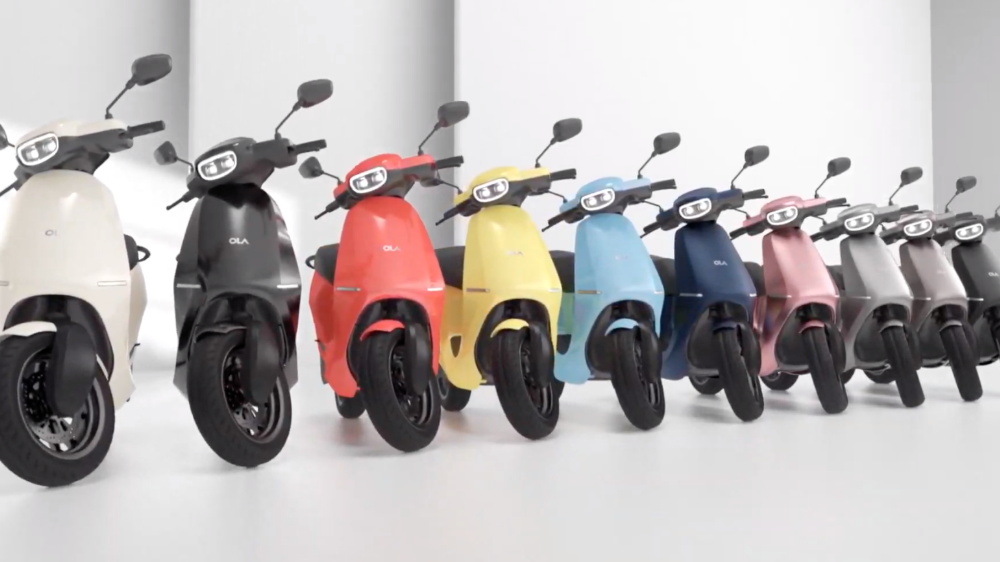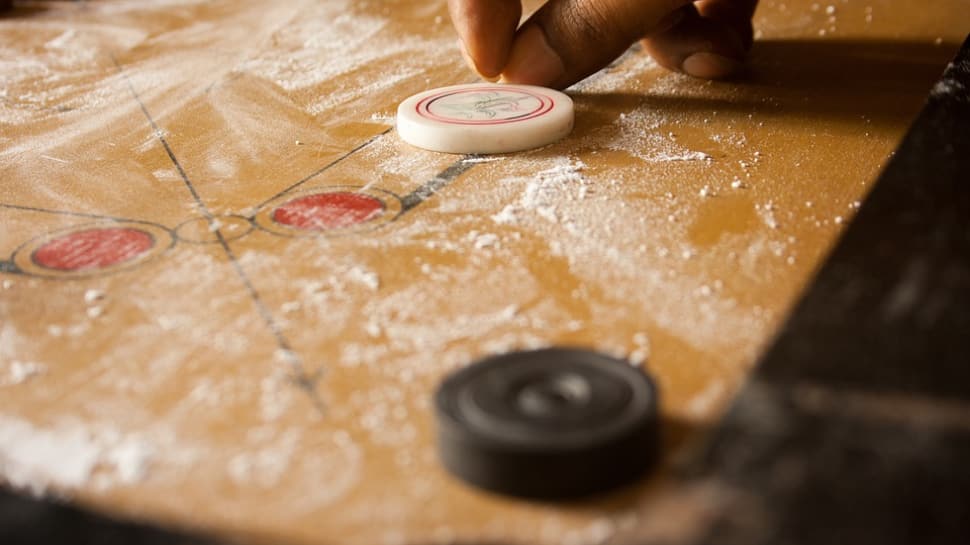ओला एस1, ओला एस1 प्रो कीमत और उपलब्धता
ओला एस1 और एस1 प्रो क्रमश: 99,999 रुपये और 1,29,999 रुपये की कीमत में उपलब्ध होंगे। जिन लोगों ने ओला इलेक्ट्रिक की वेबसाइट पर पहले ही 499 रुपये में ओला स्कूटर की प्री-बुकिंग कर ली थी, वे 8 सितंबर, 2021 के बाद इसे पाने वाले पहले व्यक्ति होंगे। ओला उन लोगों के लिए अक्टूबर से स्कूटर की डिलीवरी शुरू करेगी, जिन्होंने प्री-बुकिंग नहीं की है।
कीमत की बात करें तो आपको अपनी राज्य सरकार से सब्सिडी मिल सकेगी। गुजरात में ओला एस1 और एस1 प्रो की कीमत क्रमश: 79,999 रुपये और 1,09,999 रुपये है, इसके बाद दिल्ली, राजस्थान और महाराष्ट्र का नंबर आता है। राज्यवार कीमतों का उल्लेख नीचे किया गया है।
ओला एस1 बनाम एस1 प्रो: क्या अंतर हैं
जहां ओला एस1 और एस1 प्रो दोनों एक जैसे दिखते हैं, वहीं मुख्य अंतर रेंज, टॉप स्पीड, रंग विकल्प और राइडिंग मोड के संबंध में हैं। Ola S1 90 किमी प्रति घंटे की शीर्ष गति प्रदान करता है और 3.6 सेकंड के 0 से 40 किमी प्रति घंटे का दावा करता है। अधिकतम बैटरी रेंज (या आप एक बार चार्ज करने पर कितनी दूरी तय कर सकते हैं) 8.5kw की अधिकतम शक्ति के साथ 121km है। ओला एस1 पांच रंगों में आता है- सफेद, पीला, लाल, काला और आसमानी नीला (या चैती)।
दूसरी ओर, S1 प्रो 115 किमी प्रति घंटे की शीर्ष गति प्रदान करता है और 3 सेकंड के 0 से 40 किमी प्रति घंटे के समय का दावा करता है। 8.5kw की अधिकतम शक्ति के साथ अधिकतम बैटरी रेंज 181 किमी है। ओला एस1 प्रो 10 रंगों में आता है। S1 के पांच रंगों को शामिल करते हुए, आप पीले, गुलाबी और तीन रंगों के काले और गहरे भूरे रंग का भी विकल्प चुन सकते हैं। एक और अंतर यह है कि S1 प्रो वैरिएंट तीन राइडिंग मोड्स के साथ आता है- नॉर्मल, स्पोर्ट और हाइपर। S1 मॉडल में हाइपर राइड मोड नहीं है।

ओला एस1 और एस1 प्रो राइड फीचर्स
ओला एस1 और एस1 प्रो ट्रेंडी डिजाइन, बैटरी रेंज, हाई स्पीड और सुविधा पर केंद्रित हैं। स्कूटर एक बड़े बूट स्पेस के साथ आते हैं जिसमें दो हेलमेट हो सकते हैं। इसमें हिल होल्ड, रिवर्स पार्किंग मोड, दोनों टायरों पर डिस्क ब्रेक के साथ क्रूज कंट्रोल है जो 40 किमी प्रति घंटे की रफ्तार से सक्रिय होता है। दोनों स्कूटर चौड़े टायरों के साथ भी आते हैं।

ओला एस1 और एस1 प्रो स्मार्ट कनेक्टेड फीचर्स
ओला एस1 और एस1 प्रो स्मार्ट कनेक्टेड फीचर्स के साथ आते हैं जो सुनिश्चित करते हैं कि आपको राइडिंग के दौरान अपने स्मार्टफोन को बाहर निकालने की जरूरत नहीं है। कनेक्टेड डैशबोर्ड अनुभव प्रदान करने के लिए स्कूटर का अपना ऑपरेटिंग सिस्टम आता है। एक ऑक्टा-कोर प्रोसेसर और 3 जीबी रैम द्वारा संचालित एक बड़ा 7 इंच का टच डिस्प्ले है। डैशबोर्ड वाई-फाई और ब्लूटूथ और 4जी कनेक्टिविटी को सपोर्ट करता है।
शुरुआत के लिए, स्कूटर निकटता सेंसर के साथ आते हैं जो आपको (और आपके मोबाइल) को पास करते समय महसूस कर सकते हैं और स्वचालित रूप से चालू हो जाते हैं। आप अपनी पसंद के अनुसार डैशबोर्ड और ध्वनि की थीम बदल सकते हैं और संगीत भी चला सकते हैं, नेविगेशन प्राप्त कर सकते हैं और वॉयस कमांड के साथ पूरे डैश को संचालित कर सकते हैं। आवाज नियंत्रण चालू करने के लिए, आपको केवल हे ओला कहना होगा। डैशबोर्ड विजेट भी प्रदान करता है और एक और दिलचस्प विशेषता यह है कि आप अलग-अलग सवारों के लिए अलग-अलग उपयोगकर्ता प्रोफ़ाइल बना सकते हैं। यह उसी तरह है जैसे आप अपने मोबाइल या लैपटॉप पर अलग-अलग अकाउंट कैसे बना सकते हैं।

अपने मोबाइल पर, आप स्कूटर की बैटरी स्थिति प्राप्त कर सकते हैं, घर पर सेवा ऑर्डर कर सकते हैं और साथी ऐप के माध्यम से स्कूटर को दूरस्थ रूप से नियंत्रित कर सकते हैं। आप डैशबोर्ड से ही कॉल भी ले सकते हैं और बड़ी स्क्रीन पर दिशा-निर्देश भी प्राप्त कर सकते हैं। अन्य विजेट सुविधाओं में मौसम विवरण, बैटरी संकेतक, हवा की गति, टोक़, त्वरण और बहुत कुछ शामिल हैं।
Ola S1 और S1 Pro स्कूटर की बैटरी कैसे चार्ज करें
घर या ऑफिस में आप स्कूटर को चार्ज करने के लिए किसी भी 5A सॉकेट का इस्तेमाल कर सकते हैं। आपको पोर्टेबल 750W चार्जर मिलेगा। आप किसी भी यात्रा पर जाने का विकल्प भी चुन सकते हैं ओला इलेक्ट्रिक चार्जिंग नेटवर्क चार्ज करने के लिए 100 शहरों में। ओला हाइपरचार्जर सुविधाओं में, बैटरी 18 मिनट में 50% तक चार्ज हो जाती है। घर पर, यह 6 घंटे तक हो सकता है।
.













